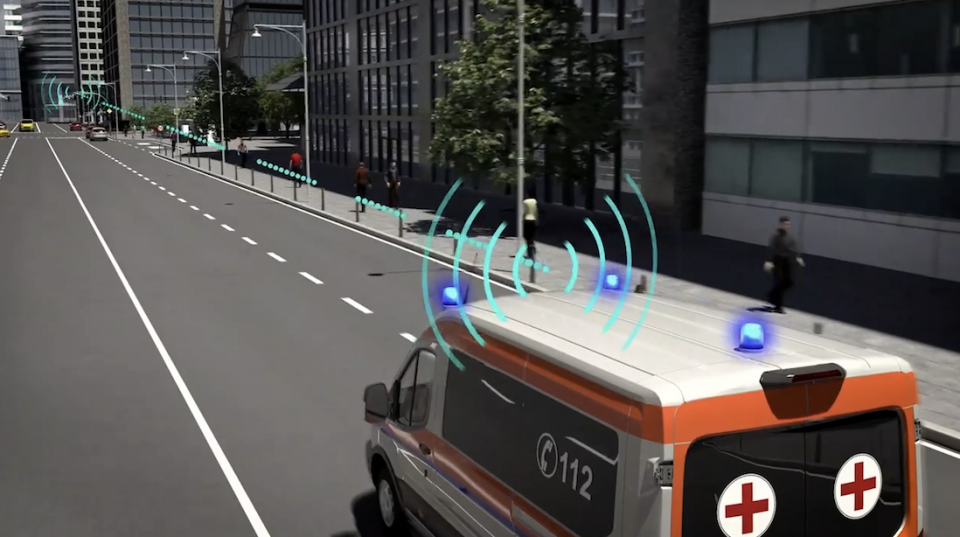Ford trials smart traffic lights that go green for emergency vehicles

Ford has trialled connected traffic light tech that could automatically go green to offer clearer routes for ambulances, fire engines and police vehicles.
The trial was part of a broader project that involved testing automated and connected vehicles and networked infrastructure in highway, urban and rural areas. This research exemplifies Ford’s commitment to using connectivity and innovation to improve the driving experience.
In order to test the technology, Ford utilised a road with eight consecutive traffic lights in Aachen, Germany, and two stretches with three consecutive traffic lights just outside the city, all set up by the project’s partners.
The Ford Kuga Plug-In Hybrid test vehicle, equipped with on-board units (for communicating with the infrastructure) and rapid control prototyping hardware (for running the prototype software in the vehicle), acted as an ambulance and passenger vehicle for the different test scenarios.
For testing an emergency response situation, the test vehicle signalled to the traffic lights to turn the light green. Once the vehicle passed through the junction, the traffic lights returned to standard operation.
For testing daily driving situations, the test vehicle received the timing information for when the traffic lights turned from red to green and green to red. Ford’s Adaptive Cruise Control technology then adapted the vehicle’s speed to help ensure a higher proportion of traffic encountered a green light. 4
When the traffic light was red, the vehicle’s speed was reduced well ahead of the junction to time the vehicle’s approach to arrive at the light the moment it turned green, for example from 30 mph to 20 mph.
For vehicles encountering a red light, the technology could still help to minimise harsh braking and the time spent at a standstill. The vehicle received the traffic light information well ahead of the junction and slowed down earlier, helping to reduce congestion.
The communication between vehicles and traffic lights is enabled by C-V2X (Cellular Vehicle-to-Everything) technology, a unified platform that connects vehicles to roadside infrastructure, other vehicles and other road users.
“Exchanging data between cars, emergency vehicles and traffic lights in real time using the latest mobile phone technology makes road traffic safer and more efficient,” said Michael Reinartz, director, Consumer Services and Innovation, Vodafone Germany. “Intelligent traffic light control helps save lives when every second counts and also reduces unnecessary waiting times and cuts CO2 emissions.”



